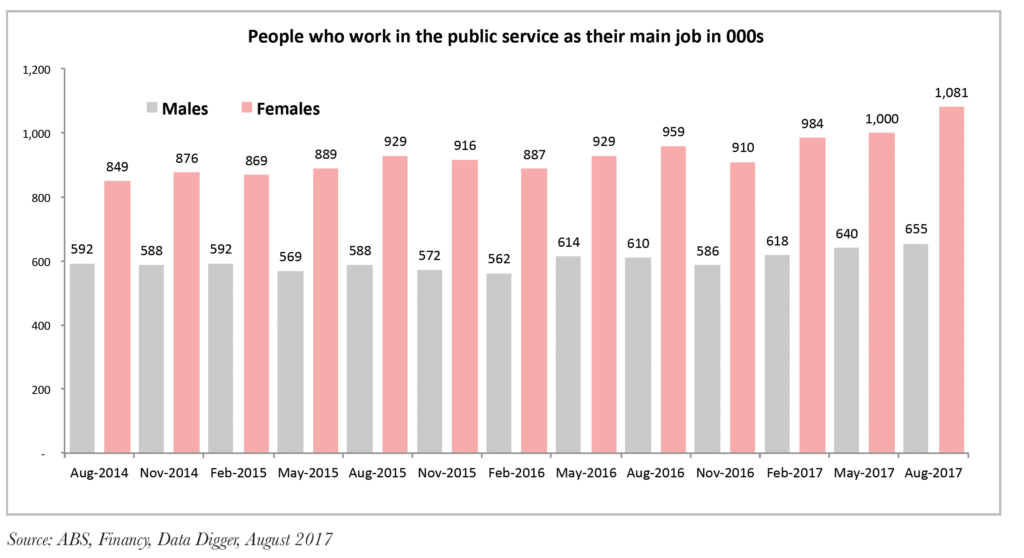We’ve seen a lot of focus on the need to improve the gender dynamics in listed companies, particularly around improving the number of women on boards, but is enough being done to pressure the public sector where gender pay gaps are rife?
According to the June Financy Women’s Index, the public sector under state, federal and council government has been one of the biggest employers of women, with 1.1 million females working for the public service versus 655,000 males.
The number of women working in the public service continues to grow on average at 2 per cent, per quarter versus 1 per cent for men.

Women tend to dominate non-managerial positions in health, aged care, and teaching. The reason we have traditionally seen more women in these services roles is because there tends to be a greater ability to work part-time or flexibly – which is helpful when you have to also care for loved ones.
The upcoming December jobs report will also shed further light on the participation trends of women in full and part-time work. Most recently the number of women working full time tipped over 3 million.
Women are still seen as a the great nurturers of the mother country. Yet, many of these roles remain under paid and as a result, under respected.
Indeed is it a case of everyone wants to be cared for at sometime in their life by that motherly-type person… but we just don’t want to pay through the nose for it?
The pay gap in the health care and social assistance sector, which employs the most women, is one of the widest at 23.5 per cent or $255 on average.
Despite this sector having more female managers, men still dominate CEO positions, according to the Workplace Gender Equality Agency (WGEA).
The Agency also noted in it’s most recent research paper, that the pay gap between men and women, while narrowing, stands at about $26,000 for non-managerial roles and about $90,000 for those in leadership positions.
Education and training is the second biggest employer of women, and has one of the smallest pay gaps at 11.7 per cent or $12 on average.
The smallest level of wage disparity remains in public administration at 6 per cent after narrowing previously from 7.1 per cent earlier this year.
The gender pay gap is influenced by there being more men in full-time work and many other contributing factors including discrimination, industry, career breaks to care for loves ones and a lack of workplace flexibility in senior roles which tend to see more women occupy lower paying positions, according to the WGEA.













